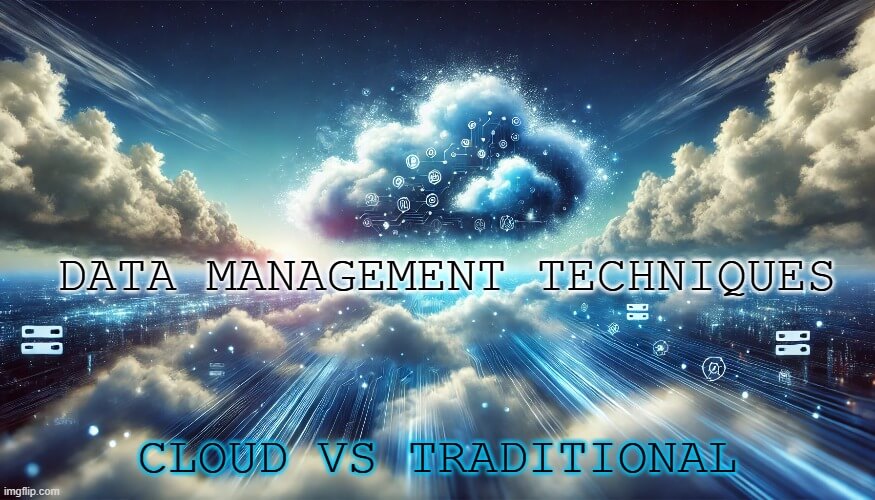The debate between cloud data management and traditional data management has gained prominence as businesses weigh the pros and cons of each approach. While traditional methods have been the backbone of data storage and management for decades, cloud solutions offer a dynamic alternative in today’s digital-first landscape. This blog delves into the distinctions between these two paradigms, their respective advantages and disadvantages, and how to choose the right strategy for your organization.
What is Traditional Data Management?
Traditional data management refers to the practice of storing, organizing, and accessing data using on-premises infrastructure such as physical servers and local storage devices. This method has been a mainstay for businesses seeking full control over their data and systems.
Features of Traditional Data Management:
On-Premises Infrastructure: Data is stored on physical servers located within the organization’s premises.
Limited Scalability: Scaling requires significant investment in additional hardware and resources.
Direct Control: Organizations have full control over data security, maintenance, and governance.
Advantages:
High level of customization to meet specific business needs.
Greater control over data and infrastructure.
Offline access ensures data availability during internet outages.
Disadvantages:
High upfront costs for hardware and maintenance.
Limited flexibility in scaling resources.
Vulnerability to physical disasters like fire or hardware failure.
What is Cloud Data Management?
Cloud data management involves storing and managing data on remote servers accessed via the internet. Cloud solutions offer flexibility, scalability, and advanced features that cater to the needs of modern organizations.
Features of Cloud Data Management:
Remote Infrastructure: Data is stored and managed on cloud platforms such as AWS, Azure, or Google Cloud.
High Scalability: Resources can be scaled up or down based on demand.
Accessibility: Data is accessible from anywhere with an internet connection.
Advantages:
Reduced upfront costs due to subscription-based pricing.
Scalability to accommodate business growth.
Enhanced collaboration through real-time data access.
Disadvantages:
Dependence on internet connectivity.
Data security concerns due to shared infrastructure.
Potential long-term costs exceeding traditional systems for large-scale operations.
Key Differences Between Cloud and Traditional Data Management
The fundamental differences between cloud and traditional data management can be summarized as follows:
| Aspect | Traditional Data Management | Cloud Data Management |
|---|---|---|
| Infrastructure | On-premises physical servers. | Remote servers managed by third-party providers. |
| Scalability | Limited and expensive scalability. | Highly scalable and cost-effective. |
| Cost | High upfront investment and maintenance costs. | Subscription-based pricing with reduced initial expenses. |
| Accessibility | Limited to on-premises or VPN setups. | Accessible from anywhere with an internet connection. |
| Security | Full control but vulnerable to physical threats. | Shared responsibility with robust cloud security measures. |
| Maintenance | Managed internally by IT teams. | Managed by cloud providers, reducing internal workload. |
| Disaster Recovery | Requires separate infrastructure for backups. | Built-in disaster recovery and redundancy options. |
Choosing the Right Approach
The decision between cloud and traditional data management depends on several factors unique to your organization. Below are key considerations:
1. Budget
Traditional: Ideal for businesses with the capital to invest in infrastructure and maintenance.
Cloud: Suitable for organizations seeking a pay-as-you-go model and lower upfront costs.
2. Data Sensitivity
Traditional: Preferred by industries with stringent data privacy regulations, such as healthcare or finance.
Cloud: Modern cloud providers comply with various standards (e.g., GDPR, HIPAA) to address data sensitivity concerns.
3. Scalability Needs
Traditional: Works well for organizations with predictable and stable data requirements.
Cloud: Offers the flexibility to scale resources dynamically based on fluctuating demands.
4. Disaster Recovery
Traditional: Requires investment in separate infrastructure for backups and recovery.
Cloud: Most cloud platforms offer built-in disaster recovery solutions.
5. IT Expertise
Traditional: Demands a skilled in-house IT team for maintenance and troubleshooting.
Cloud: Reduces the burden on internal teams by outsourcing infrastructure management.
Hybrid Approach: A Middle Ground
For organizations that seek to balance the benefits of both paradigms, a hybrid approach can be an effective solution. Hybrid data management combines on-premises infrastructure with cloud platforms, allowing businesses to leverage the strengths of both methods.
Advantages of Hybrid Data Management:
Enhanced flexibility to allocate workloads across environments.
Improved data security by keeping sensitive data on-premises.
Cost optimization by utilizing cloud resources for non-critical workloads.
Use Cases:
Businesses transitioning from traditional to cloud systems.
Organizations requiring compliance with strict regulatory requirements.
Enterprises with fluctuating workloads needing scalable solutions.
1. Increased Adoption of Multi-Cloud Strategies
Businesses are increasingly leveraging multiple cloud platforms to avoid vendor lock-in and optimize costs.
2. Advancements in AI-Driven Data Management
AI and machine learning are transforming data management with automated analytics, anomaly detection, and predictive insights.
3. Enhanced Data Security Measures
As cyber threats evolve, data management tools are integrating advanced encryption, zero-trust architectures, and AI-powered threat detection.
4. Focus on Sustainability
Green computing initiatives are driving the development of energy-efficient data centers and eco-friendly cloud solutions.
Conclusion
Cloud data management and traditional data management each offer unique advantages and challenges. While traditional methods provide control and reliability, cloud solutions deliver scalability and modern features that cater to the needs of today’s businesses. By carefully evaluating your organization’s requirements, budget, and growth plans, you can choose the approach that best aligns with your goals.
For those seeking a balanced solution, the hybrid model offers the best of both worlds. As technology continues to advance, staying informed about emerging trends and innovations will be crucial to optimizing your data management strategy. Embrace the possibilities and empower your organization with the right tools and systems for success.
Why Businesses Trust SecureMyOrg for Comprehensive Network Security
At SecureMyOrg, we uncover and fix all possible security vulnerabilities of mobile and web, while providing solutions to mitigate risks. We are trusted by renowned companies like Yahoo, Gojek and Rippling, and with 100% client satisfaction, you’re in safe hands!







Some of the things people reach out to us for –
- Building their cybersecurity program from scratch – setting up cloud security using cost-effective tools, SIEM for alert monitoring, building policies for the company
- Vulnerability Assessment and Penetration Testing ( VAPT ) – We have certified professionals, with certifications like OSCP, CREST – CPSA & CRT, CKA and CKS
- DevSecOps consulting
- Red Teaming activity
- Regular security audits, before product release
- Full time security engineers.
Relevant Posts
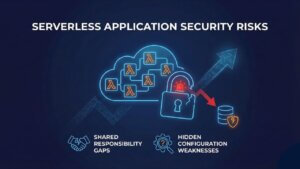
Why Weak Serverless Application Security Puts Your Business at Risk
Weak security in serverless environments often goes unnoticed until it leads to real damage. Misconfigured triggers, broad permissions, and poor visibility can expose sensitive data and disrupt business operations. Understanding where the risks appear is the first step toward building safer, more reliable serverless applications.
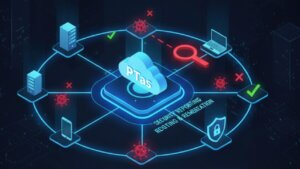
What Is Penetration Testing as a Service?
Penetration testing as a service (PTaaS) lets experts simulate real attacks to uncover vulnerabilities before hackers do. This guide explains the process, benefits, and costs, helping businesses strengthen defenses with predictable, ongoing security checks.
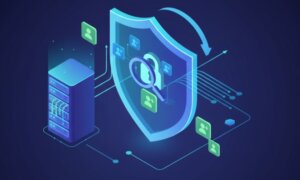
How To Inspect Encrypted Traffic Without Breaking Privacy
Network administrators face a challenge: securing systems while respecting privacy. This guide explains how to inspect encrypted traffic without breaking privacy using metadata, anomaly detection, and machine learning ensuring visibility, compliance, and trust.

How to Audit Infrastructure as Code (IaC) for Security Vulnerabilities
Discover how to audit Infrastructure as Code (IaC) for security vulnerabilities with this practical guide. Learn to scan IaC files using tools like Checkov, fix issues like exposed resources, and integrate audits into CI/CD pipelines. Protect your cloud systems from misconfigurations and ensure compliance with clear, actionable steps.
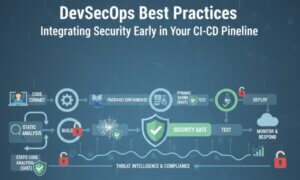
DevSecOps Best Practices: Integrating Security Early in Your CI/CD Pipeline
This article provides a practical guide to embedding security into every stage of your CI/CD pipeline. Learn core DevSecOps best practices like SAST, DAST, dependency scanning, secrets management, and compliance automation to catch vulnerabilities early, foster a culture of shared ownership, and build a secure-by-design development process that accelerates release cycles.

5 Cloud Misconfigurations That Lead to Data Breaches
Cloud misconfigurations are one of the leading causes of data breaches, yet they’re also among the most preventable. From exposed storage buckets to weak IAM policies, attackers exploit these mistakes daily. Learn about the top 5 misconfigurations and how your organization can fix them before they lead to costly data exposure.
